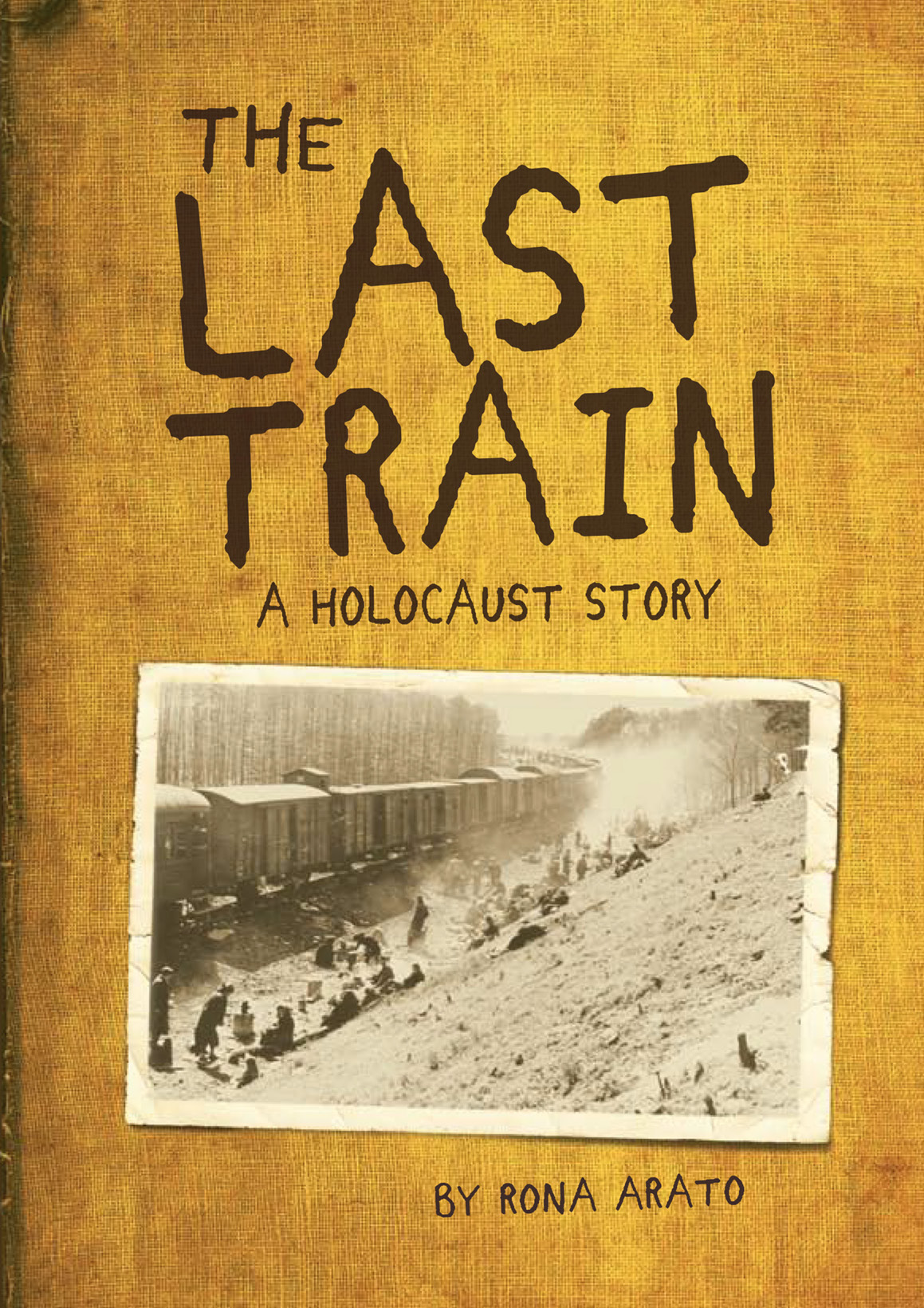
The Last Train
A Holocaust Story
فرمت کتاب
ebook
تاریخ انتشار
2014
Lexile Score
580
Reading Level
2-3
ATOS
4.1
Interest Level
6-12(MG+)
نویسنده
Rona Aratoناشر
Owlkids Books Inc.شابک
9781926973715
کتاب های مرتبط
- اطلاعات
- نقد و بررسی
- دیدگاه کاربران
نقد و بررسی

January 14, 2013
One of the most heartening stories to come out of the Holocaust was that of an American tank battalion’s 1945 discovery of an abandoned death train carrying 2,700 Jews—a moment documented by the American soldiers’ remarkable photographs. Among those liberated was a six-year-old Hungarian Jew (and Arato’s future husband), Paul Auslander. As the family moved from ghetto to camps, Paul was able to remain with his mother, his fiercely protective brother, an aunt, and two cousins. Arato’s writing lacks tautness, and she is only moderately successful in bringing her story full circle, when an adult Paul is reunited with his liberators. What is most compelling is her emphasis on how his family literally held on to one another during their ordeal, as if a touch, a grasp, or an embrace could ward off the unfolding horrors. Older brother Oscar is constantly reaching for Paul’s hand to keep him from being lost or frightened; their mother tries to coax warmth into her children’s freezing, starved bodies with her bare hands. It is in these moments of simple, profound human contact that the story finds its real power. Ages 9–up.

April 1, 2013
Gr 7 Up-In 1944, Paul Auslander's town of Karcag, Hungary, is occupied by German soldiers. The Nazis have taken his father to a labor camp, and the 5-year-old, his 10-year-old brother, and their mother are moved to a ghetto. Their lives there and in a series of concentration camps, in cattle cars, and on a sugar-beet farm are presented from the points of view of the two brothers: Oscar, as he tries to shield his rambunctious brother from the guards and support his sick mother in the interminable check-in lines, and Paul, whose exuberant curiosity threatens his life. It is on a train from Bergen Belsen to what is sure to be certain death that the prisoners are liberated by the Americans. This fictionalized story is told by Paul's wife, who was inspired to do so by the coming together of survivors of that last train and their liberators at a symposium at Hudson Falls High School, New York, in September 2009. It was a photo of the last train discovered on the Internet in 2008 that prompted the survivors to speak at last of their terrible ordeal. The author relates the thoughts of the children as they experience the horrors of the camps: hunger, beatings, starvation, disease, and death of other prisoners. The vivid content is frightening, the language clear. Informative black-and-white photos include the family before and after the war, the survivors on the day of liberation, and American soldiers. The last two chapters offer a moving account of the reunion of survivors and liberators.-Jackie Gropman, formerly at Chantilly Regional Library, VA
Copyright 2013 School Library Journal, LLC Used with permission.

February 15, 2013
Arato fictionalizes the painful, true story of brothers Paul and Oscar Auslander, 5 and 10 respectively, along with their mother, Lenke--Hungarian Jews who survived Nazi concentration camps during the final years of World War II. The story follows the family as they are forced to move repeatedly, ending up at the horrifying Bergen-Belsen camp. They are transported in cattle cars packed with terrified fellow Jews. The clarity of specific recalled events crystallizes their reality. Tiny Paul, momentarily separated from his family, is shoved onto a different train than Oscar and his mother; miraculously, they find one another again. The book has three distinct parts: the inhumane camps, the dramatic rescue and the powerful reunion in 2009 of Paul and his American liberators. Most revealing are the photographs and author's notes, conveying both historical details and the personal conflict of remembering--Paul is the author's husband. Less successful is the delivery of the narrative itself; an emotionally flat writing style and awkward shifts in perspective from young Paul to an omniscient narrator serve to distance readers. The maladroit placement of a sheaf of images, the first of which reveals the happy family reunited in 1947, in the middle of the titular journey is especially unfortunate. Nevertheless, this is a good introduction to a difficult topic--give it to readers for whom a "true" survivor's story will carry more weight than a wholly fictional account. (introduction, photographs, author's notes) (Historical fiction. 9-13)
COPYRIGHT(2013) Kirkus Reviews, ALL RIGHTS RESERVED.

March 1, 2013
Grades 5-8 Arato makes clear that although this title's dialogue and details are fictionalized, the family's experiences detailed in this volume are rooted in fact and based on the childhood memories of her husband, Paul Auslander, who was just five years old in 1944 when the Nazis invaded his home in Hungary. For middle readers, the viewpoints of Paul and his older brother, Oscar, 10, bring the Holocaust history very close, as his family is moved first to a ghetto and then separated from their father and placed on packed transports to Bergen-Belsen in Germany, where he and Oscar witness unbearable atrocity and try to care for their ailing mother. Hundreds die every day until, finally, after being locked for days in stifling boxcars, the family is liberated by American soldiers. From the prejudice against Auslanders (outsiders) in Hungary, and the brutality of the transports and the camps, to the dramatic liberation and the amazing reunion with the rescuing soldiers 65 years later, the personal account with many photos will stir readers to find out more Holocaust history.(Reprinted with permission of Booklist, copyright 2013, American Library Association.)

























دیدگاه کاربران